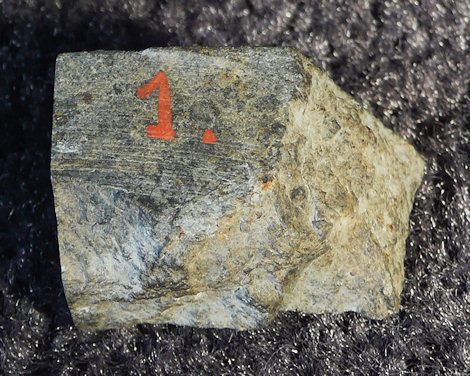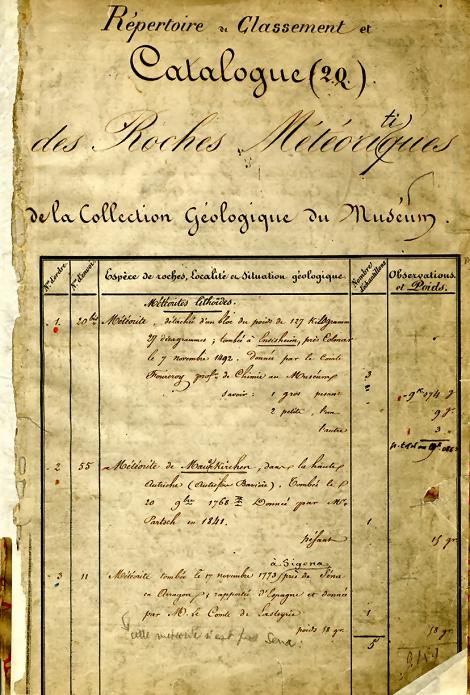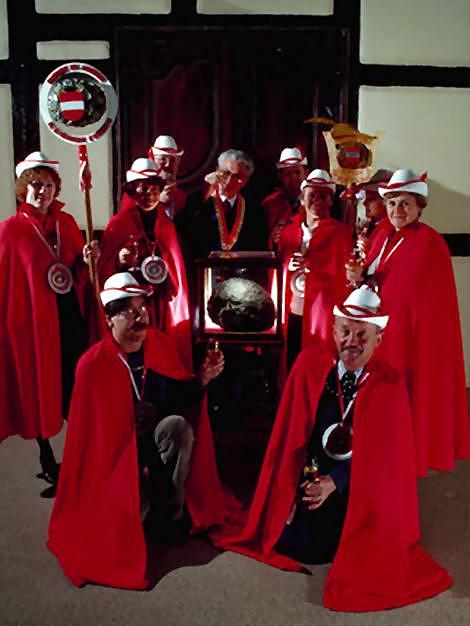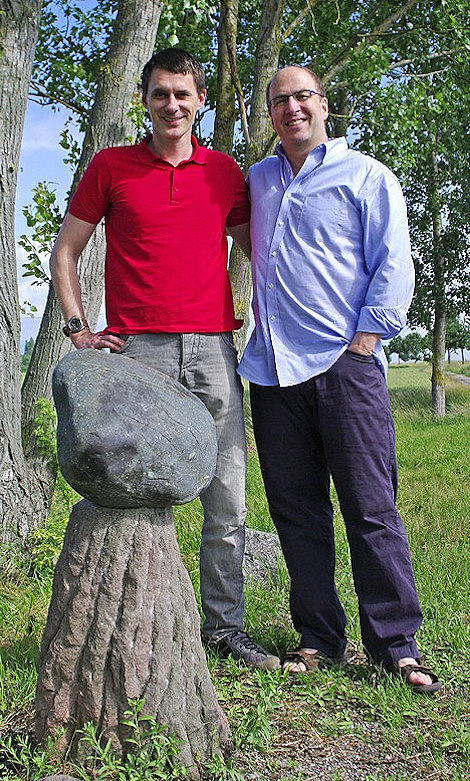
COLLECTION
| Meteorite Name: | Ensisheim |
| Location: | Haut-Rhin, France |
| Classification: | LL6 Amphoterite |
| Witnessed Fall: | Yes |
| Date and Time: | November 7, 1492 |
| TKW: | 127 kilograms |
| Remarks: |
A loud explosion preceded the meteorite's arrival near the city of Ensisheim at about noon local time. Only a young boy saw the stone fall at Les Octrois Laubourg, south of Ensisheim in the province of Alsace, and afterwards he led the local peoples to the field where it landed. After it was removed from its meter-deep hole, the locals began chipping souvenirs from the mass, which they believed to be a divine sign, until the local magistrate stopped them.
Twenty days later, King Maximilien of Austria, in conflict with the King of France Charles VIII, heard about the stone. He used thus supernatural phenomenon as a symbol of divine intervention and announced a forthcoming victory of his armies, and he also decreed that the meteorite would be chained down (such that it would not escape on its own volition) and displayed in the chorus of the church of Ensisheim. In 1794, it was transported to the Museum of Colmar, and in 1804 the town of Ensisheim recovered its trophy which by then weighed no more than 55 kilograms. Fifty years later, after the collapse of the church bell tower, the meteorite was relocated to the Palate of Regency. Today the main mass weighs 53.831 kilograms and is protected by the Brotherhood of Saint-Georges of the Guardians of the Meteorite of Ensisheim. It is about the first well documented fall ever observed. |
 | |
| 14.7 gram end cut (exterior, showing the Museum National d'Histoire Naturelle red "1" mark, as this was the first meteorite in the MHNH collection in Paris, France) | |
 | |
| 14.7 gram end cut (interior, through 3 cut faces) | |
 | |
| Catalog listing as first specimen in Musee d'Histoire Naturelle meteorite collection | |
 | |
| Guardians of the Ensisheim meteorite with the main mass | |
 | |
| Two great friends, Svend Buhl and Darryl Pitt, at the 'monument' erected to memorialize the fall site of the Ensisheim meteorite |
|
 | |
| With the Ensisheim main mass |
|
